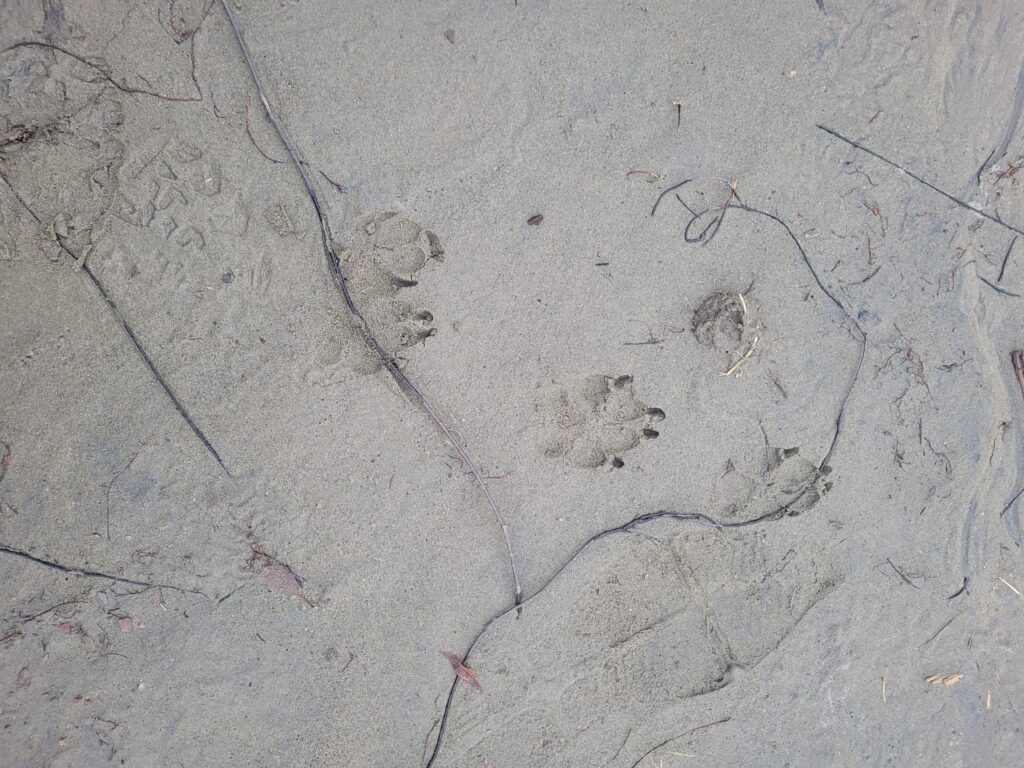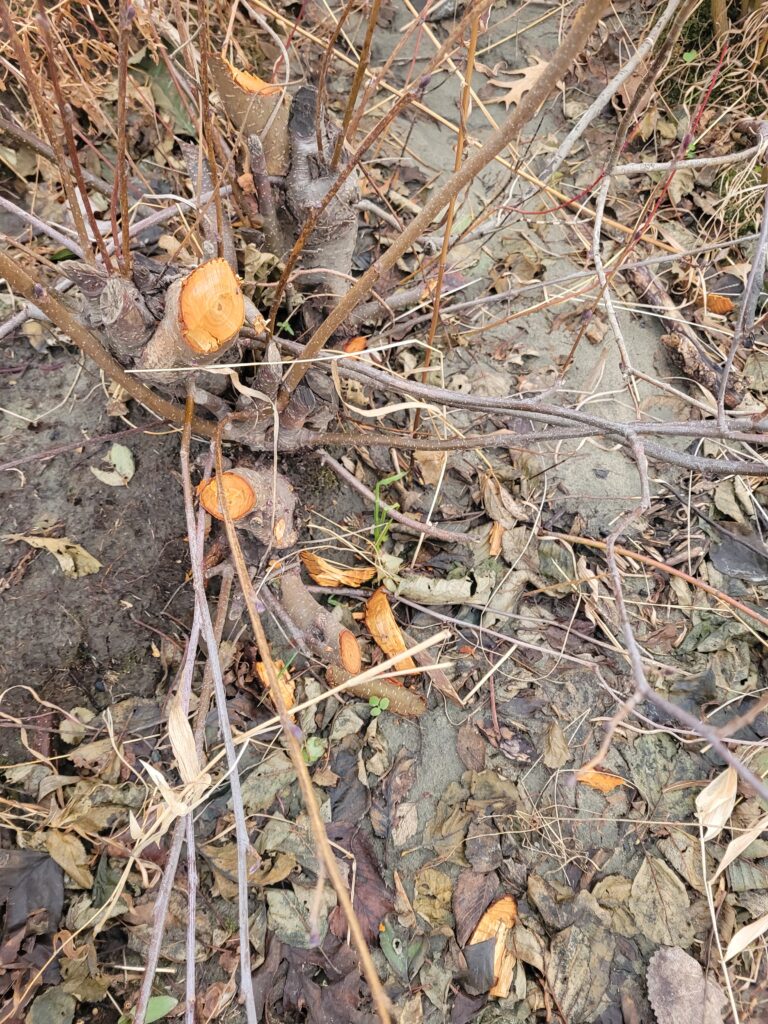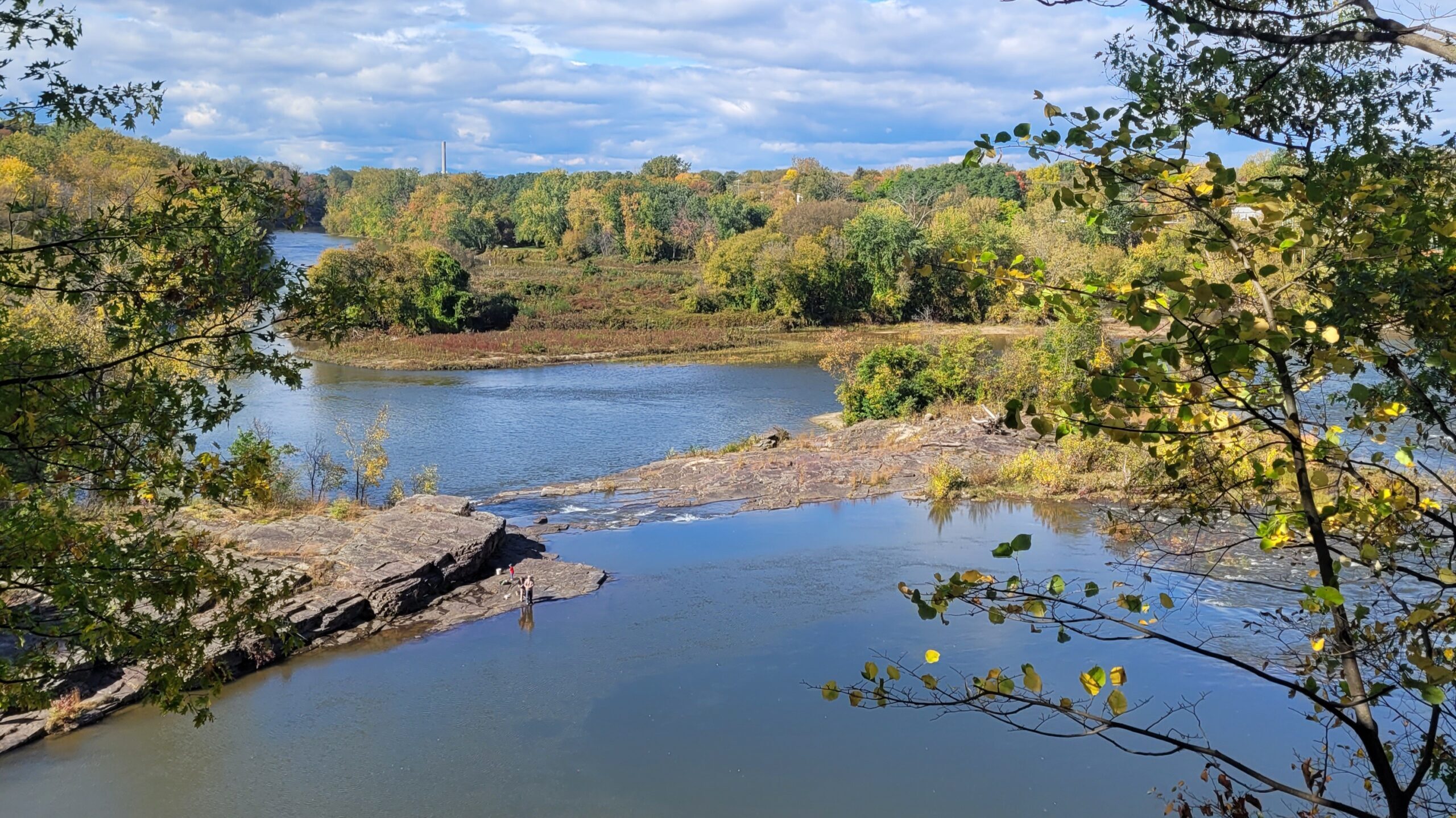I was so excited this week to be able to get out and possibly see some tracks! Unfortunately, by the time that I was able to make the walk over to Salmon Hole not only had the snow melted but it had also just rained, thoroughly dashing my hopes. Luckily, there were still plenty of interesting things to observe.
Even though there weren’t any exciting tracks from the natural world there were some human tracks! And just a few canid tracks that I’m pretty sure belonged to a dog:

I noticed that the water level had lowered significantly since the last time that I had visited, which was cool because it allowed me to explore more without the fear of being washed away. I also saw a huge flock of crows in the woods right before I get to my actual spot, and I was able to take a video.
I didn’t get any good pictures, but I enjoyed seeing all of the birds’ nests and squirrels’ nests that were visible in the deciduous trees now that the leaves are mostly gone. It was cool to see that the of all the deciduous trees the only ones with leaves still hanging on were the red oak, and the white pine were so much easier to see without all of the other leaves in the way. Once I got closer to the river and the trees and bushes were smaller, I was already able to see some of the buds that will bring about the new leaves come spring, which was pretty exciting. I recently went to a “Festival of Light and Darkness” and these buds were evocative of one of the ideas of that festival, which is that light exists in darkness, and life persist even in the dead of winter (though, really, we’re not even close to that yet.)
Even though my goal was to come to my site to look for the annual patterns of nature I ended up becoming distracted looking at the rocks and the water. There were beautiful ripples in the water which were constantly changing due to the incredibly windy nature of the day, but there were also ripples in the rock. The Winooski river is so ancient that it cuts through the Green Mountains, and these rocks have to be pretty old as well. Looking at this ripple pattern shows that these two things have been interacting for a long time, and I just thought that that was incredible.
Another thing that I thought was super interesting and exciting but wasn’t sure if it was a phenological something or not was a group of small trunks that had been shorn through. It looked really clean, so at first I suspected that it might be a human but looking at the chips surrounding the trunks, and possible bite marks I’m not quite so sure. I believe that beavers may still potentially be around and collecting stems like these for food storage, so that’s what I’m leaning towards now. I didn’t really see any other signs of aquatic mammals though, so maybe that’s something I’ll have to wait to figure out for sure until spring.

